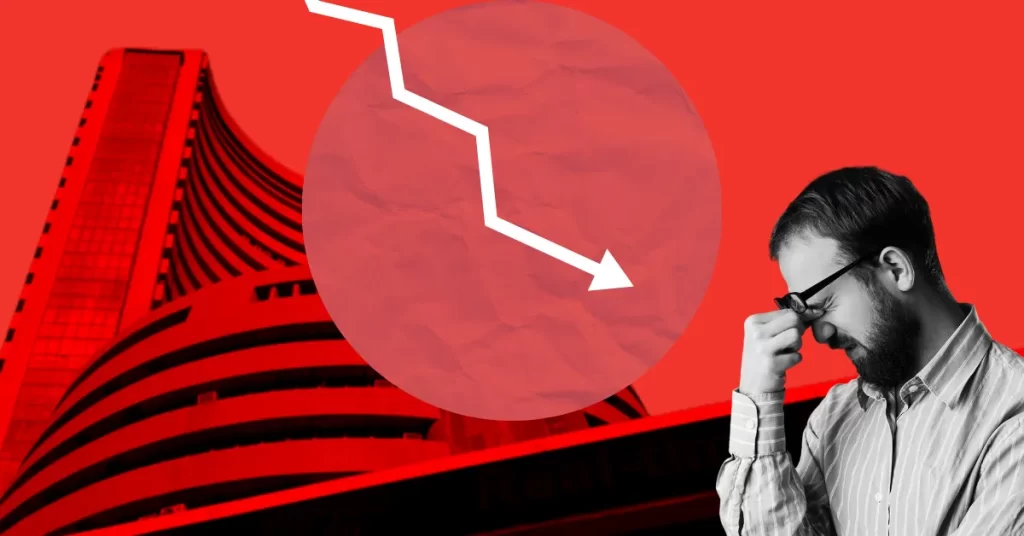US Recession Looms by 2025: Trump’s Tariffs Wreak Havoc on Markets & Crypto—Bitcoin’s Resilience Tested!

The post US Recession Looms by 2025: Trump’s Tariffs Wreak Havoc on Markets & Crypto—Bitcoin’s Resilience Tested! appeared first on Coinpedia Fintech News
The U.S. economy is on the edge, with JPMorgan warning of a looming recession by the end of 2025—triggered by President Trump’s bold new reciprocal tariffs. The tariffs, aimed at fixing trade imbalances, targets countries with major trade deficits with the US, including India, and with plans for more hikes.
On Friday it forecasted a full-year contraction in gross domestic product for 2025. JPMorgan’s chief U.S. economist, Michael Feroli, warned that America’s economy is likely to shrink under the pressure of new tariffs, with unemployment expected to rise to 5.3%.
Fed’s Cautious ApproachBesides, Fed Chair Jerome Powell echoed similar concerns, saying that the new tariffs could hit the economy harder than expected. He warned that larger tariffs will likely lead to higher inflation and slower growth.
J.P. Morgan predicts inflation will jump to 4.4% by year-end, up from 2.8% in February. They expect the Fed to start cutting rates in June, with more cuts until January 2026, bringing rates down to 2.75%-3%. However, Fed Chair Jerome Powell said there’s no rush, hinting at a cautious approach despite the economic pressures.
China’s Move Triggers Ripple EffectsThe global outlook is now under pressure as the U.S. trade war’s ripple effects grow. China has already responded by imposing a 34% tax on U.S. goods. Other countries are either threatening retaliation or preparing for tough talks.
China’s move triggered a market meltdown. Trump’s tariff war has wiped out over $5 trillion from the U.S. stock market. J.P. Morgan isn’t the only one cutting forecasts—Barclays predicts a downturn next year, Citi expects growth of just 0.1%, and UBS has lowered its estimate to 0.4%.
Canadian PM Mark Carney said the U.S. has stepped away from its role as a global economic leader. “The world economy is different today than it was yesterday,” he said while unveiling new countermeasures.
Impact on Crypto MarketsThe crypto market plunged after Trump’s tariff announcement, with investors fleeing to safe havens like gold. Bitcoin dropped below key levels after briefly hitting $88,500, while major altcoins like XRP, Solana, Dogecoin, and others fell up to 4.5%. The US crypto stocks also tumbled over the sweeping tariff announcement.
The crypto market is facing fear, uncertainty, and doubt (FUD) due to ongoing tariff issues, causing Bitcoin to drop 10% since February 1. Ethereum is hit even harder, down 20%, as tariffs threaten its blockchain ecosystem and future growth. XRP, however, has shown resilience, gaining 2% thanks to the end of regulatory uncertainty after the SEC dropped its case against Ripple.
The market sees Bitcoin in two ways: some see it as “digital gold,” a safe bet against inflation during economic uncertainty. If the Fed keeps cutting interest rates, Bitcoin could benefit from increased market liquidity. With financial instability rising, investors might turn to Bitcoin as a stable store of value.
Bitcoin’s Future Hinges On Key FactorsBitcoin future now depends on how the Fed handles inflation and the economy. Rate cuts could boost Bitcoin by adding liquidity, but a worsening economy might lower prices. Analyst Alex Krüger says Bitcoin’s fate relies on Monetary policy decisions and recession signs, with volatility expected as traders react to new data.
During a recession, spending slows, reducing liquidity, which is key for crypto growth. While Bitcoin has catalysts like ETF approvals and institutional backing, these need fresh money flow to drive gains.
To understand Bitcoin’s next moves, equities and global liquidity are 2 key factors. If the stock market continues to decline, Bitcoin is likely to follow suit. However, if stocks stabilize, it could give Bitcoin the boost needed to climb back toward its all-time highs. Additionally, keep an eye on global liquidity by tracking the Fed’s balance sheet (WALCL) and M2 velocity (M2V) as these metrics reveal how much money is flowing into the economy.
While the Fed’s current Quantitative Tightening (QT) makes it harder for riskier assets like Bitcoin to thrive, an increase in liquidity could trigger a strong market rally.
Experts Note Bitcoin’s ResilienceIn a recent tweet, Michael Saylor pointed out that tariffs are a reminder inflation is just the beginning—capital also faces risks from taxes, regulations, and unforeseen events. He highlighted Bitcoin’s strength and resilience amid these hidden risks.
Today’s market reaction to tariffs is a reminder: inflation is just the tip of the iceberg. Capital faces dilution from taxes, regulation, competition, obsolescence, and unforeseen events. Bitcoin offers resilience in a world full of hidden risks.
— Michael Saylor (@saylor) April 4, 2025
(@saylor) April 4, 2025
Besides, the famous Rich Dad Poor Dad author Robert Kiyosaki warns that the biggest stock market crash has hit, pushing us into a recession—possibly a depression. He urges Baby Boomers to ditch traditional investments and turn to real assets like gold, silver, and Bitcoin, which hold value as the dollar weakens. He advised his followers to secure their wealth before the storm gets worse.
